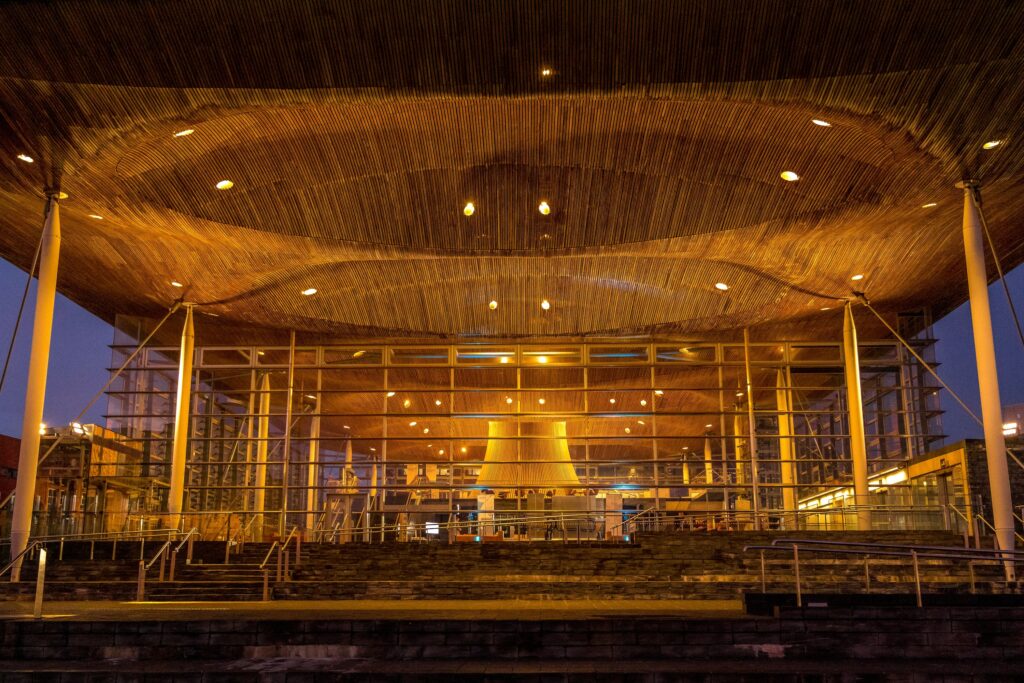Vicky Moller reports on an alternative energy conference held at Machynlleth last week
Renewables Cymru, a new organisation aimed at promoting the potential of the industry in Wales will be founded later this month following agreement at an all-Wales conference at the Centre for Alternative Technology in Machynlleth last week. Key-note speaker Peter Davies, the Sustainable Development Commissioner for Wales, drew attention to a yawning gap between Wales’ good intentions and government delivery of low carbon energy. “Good strategies are left on the sidelines never to be implemented,” he said.
Professor Brian Morgan, of the University of Wales Institute, Cardiff, emphasised the potential for large-scale investment that could come to Wales from renewable energy: £2 billion a year over 10 years, or twice the annual sum available to Welsh local authorities. This would create 13,000 jobs over ten years.
The Countryside Council’s chief executive Roger Thomas observed that Wales has a reputation throughout Europe as the green jewel of the UK, due to pioneering sustainable development. But for this reputation to be deserved we now need real leadership from government.
The urgency for renewable energy is as great as ever, the conference heard. Although the Chancellor announced that the UK has abandoned its advanced targets for stopping climate change, energy security is the real driver for renewables. Our sources of energy are failing, with a quarter of our provision being lost in the next four years. The age of many British nuclear power plants means they must be decommissioned and replaced, which will take 20 years. North sea oil and gas are running out, and imported fossil fuels are getting increasingly expensive and unreliable. “We need a sustainable energy policy agreed as soon as possible, one that emphasises diversity and security of supply, focusing on opportunities in renewable energy,” Professor Morgan said.
The 130 delegates at the conference represented renewable businesses, investors, community projects and developers. Plans to hold the conference began at the National Eisteddfod in the summer, and were taken forward by a steering group including representatives of the industry.
Opponents of wind farms called for more transparent accurate information, which was adopted as one of the goals of the new organisation. Frustration and anger was expressed from the floor at the impunity with which newspaper editors print misinformation about renewables, because, it was suspected, campaigns cause a surge in local paper circulation.
However, the Climate Change Commissioner Peter Davies urged the meeting to take the anti wind farm campaigners seriously. They feel “duped and betrayed”, he warned, creating a trust gap between business, government and people. The existing policy for siting renewables is contained in the Welsh Government’s Technical Advice Note (TAN) 8 which designates specific areas for wind farm development. This has been called ‘an unmitigated disaster’ both by residents and renewable businesses.
The conference heard how long standing businesses such as Dulas Engineering, based in Machynlleth, which pioneered wind energy before it took off in Europe, are now thinking of moving to Scotland. Civil engineering company Jones Bros, based in Rhuthun, which has 95 per cent of its 300 work force indigenous to Wales, now do nearly all their work outside the country. Speaker after speaker reported that Wales was considered not a good place to do business, even compared to the South West of England, and very much worse than Scotland which has embraced renewables. There Renewables Scotland makes sure the communities hosting renewables are properly benefited.
Recent protests against wind farms and associated infrastructure have stalled most of the potential turbines which are now stuck in the planning stage. A tidal generator planned for Pembrokeshire took six years and £2 million to reach the point where a test turbine has permission to be installed for just one year. A current consultation proposes banning photo voltaic panels in fields from huge swathes of a National Park. The chairman pointed out that National Parks make up 20 per cent of the Welsh land area.
The businesses also realised that to be welcome in Wales they need to collaborate more. By working together they could guarantee serious financial benefits to their hosts, benefits to wildlife and tourism and a restrained and proportionate approach to the numbers and locations of wind and other renewables.
A steering group of industry representatives was formed at the conference, which will look into the feasibility of founding a network for the renewables industry in Wales before the end of the year, under the name Renewables Cymru.






Comments are closed.